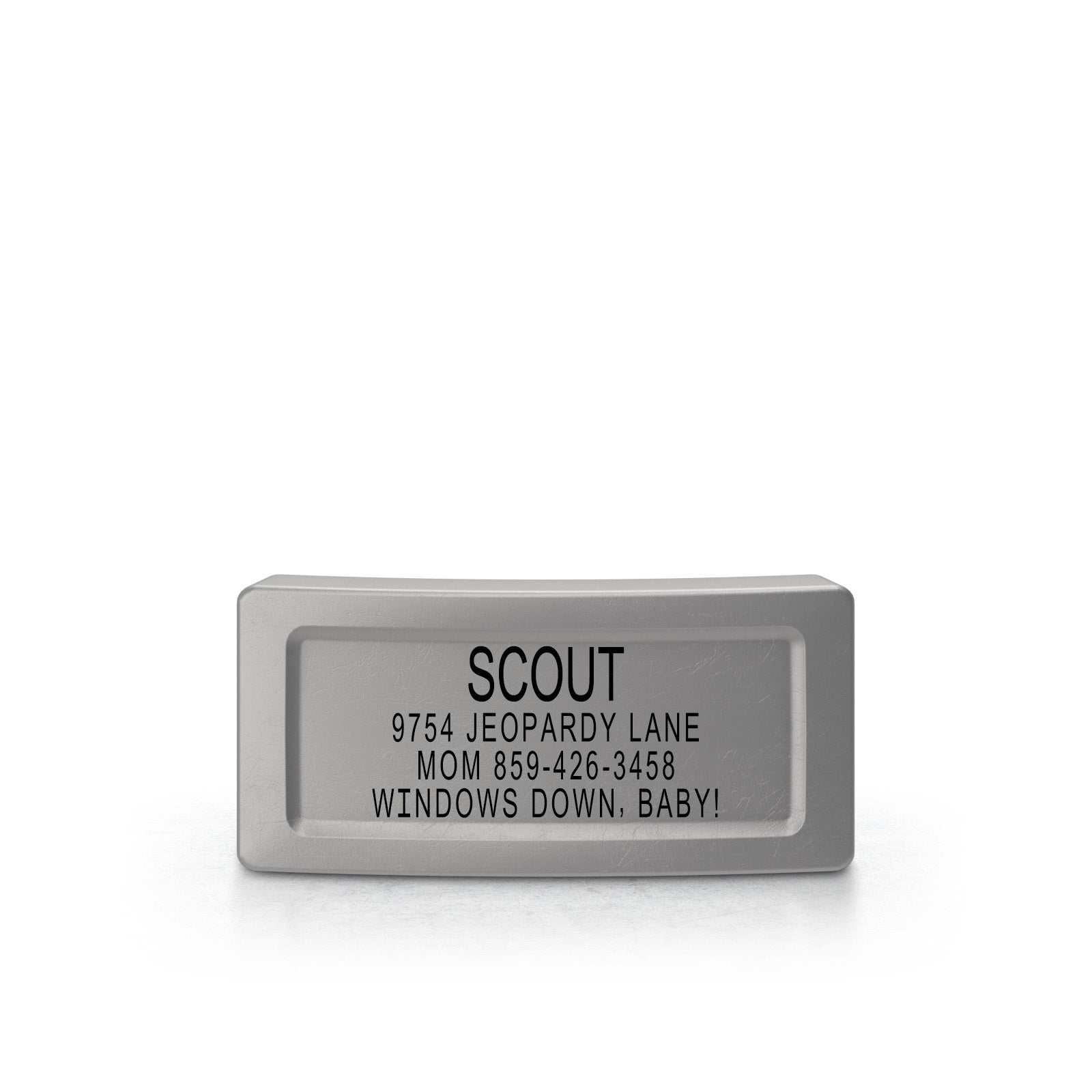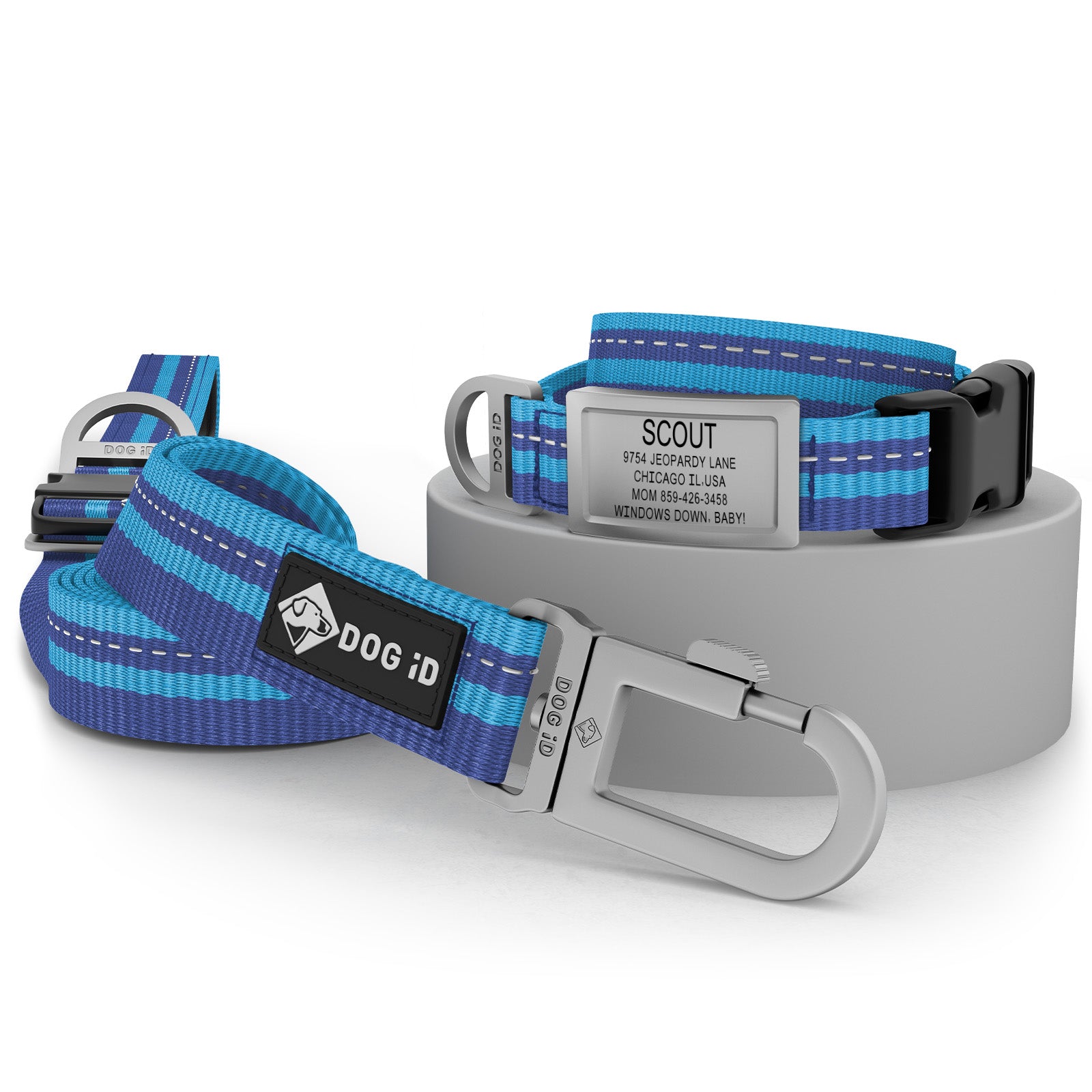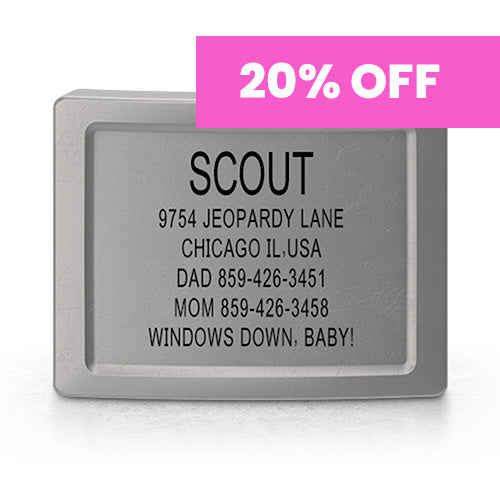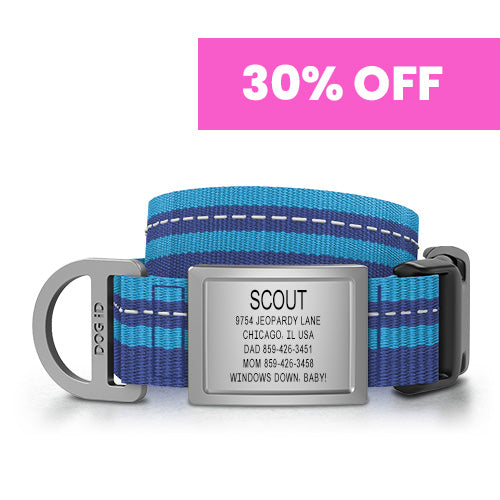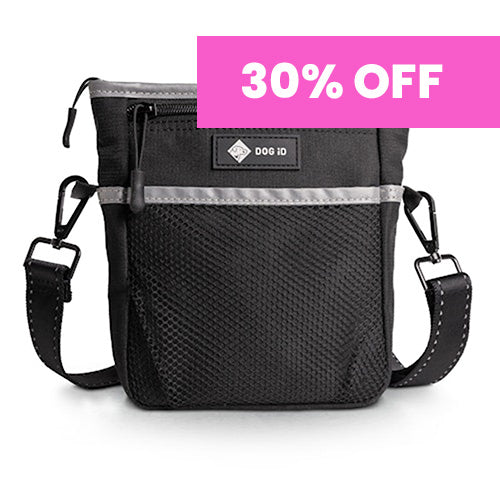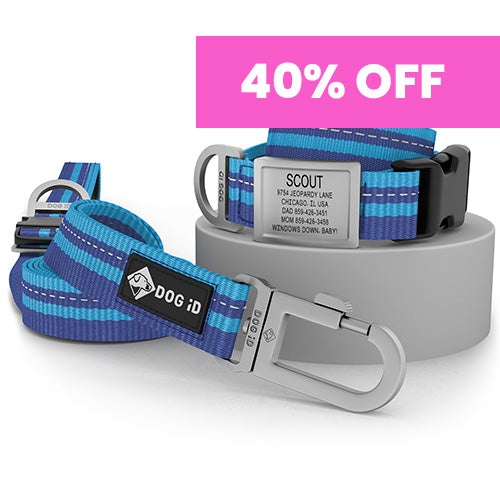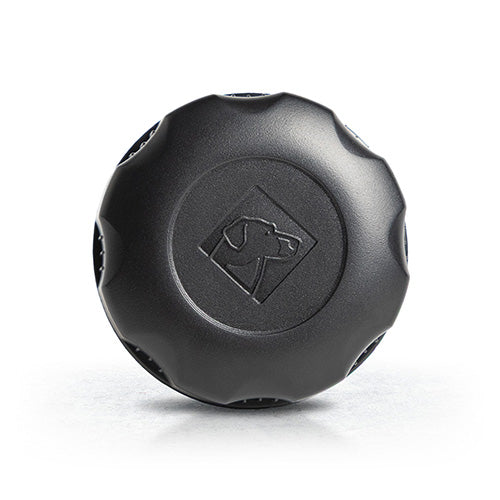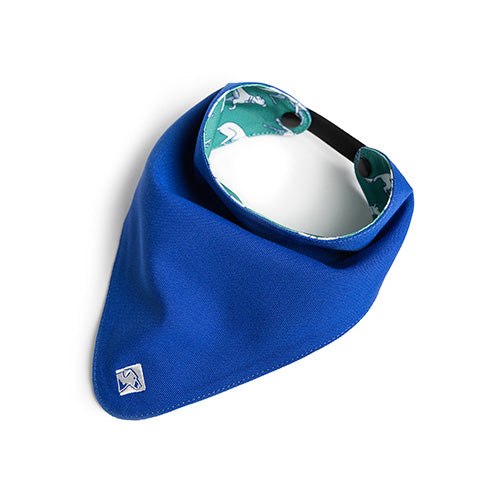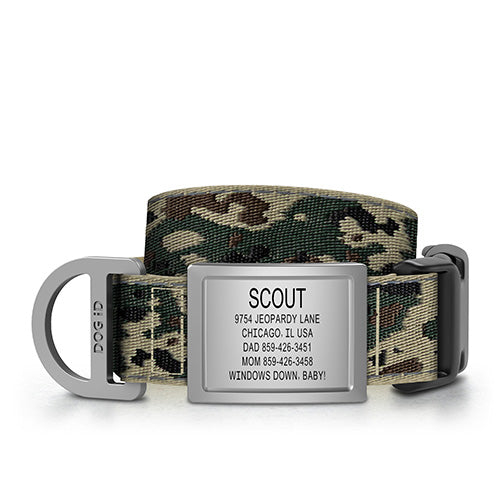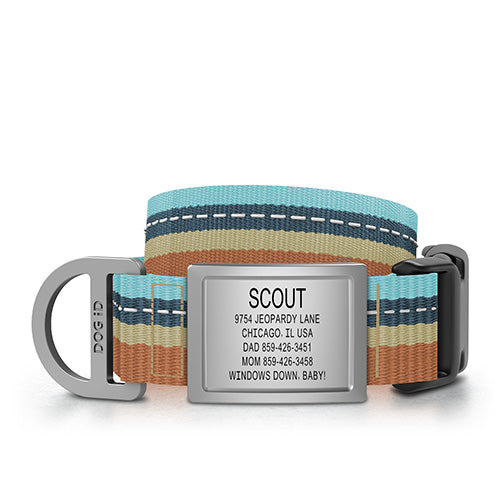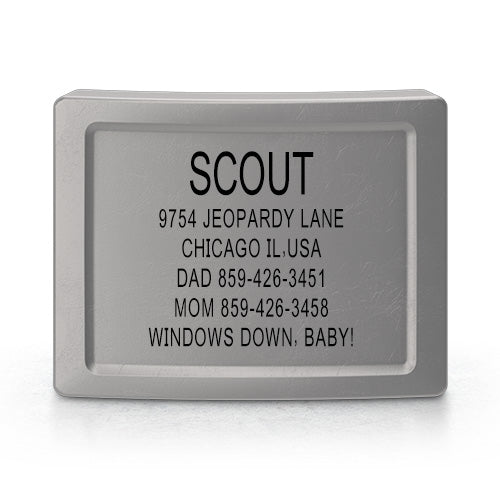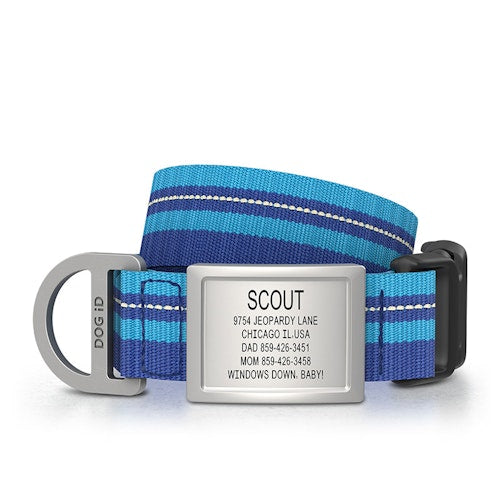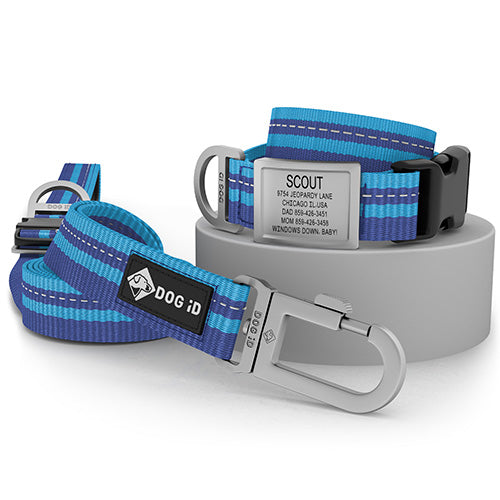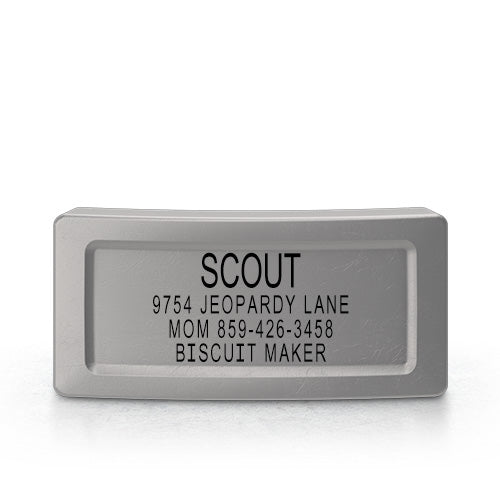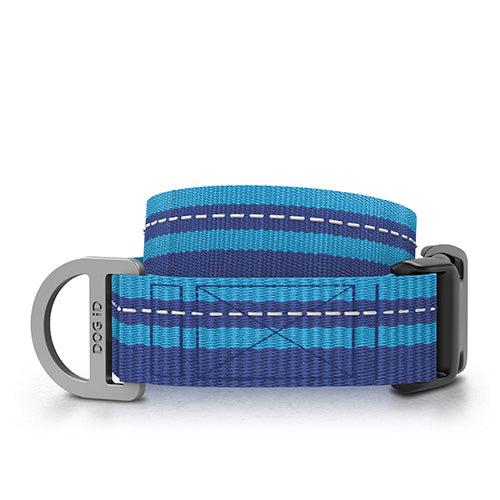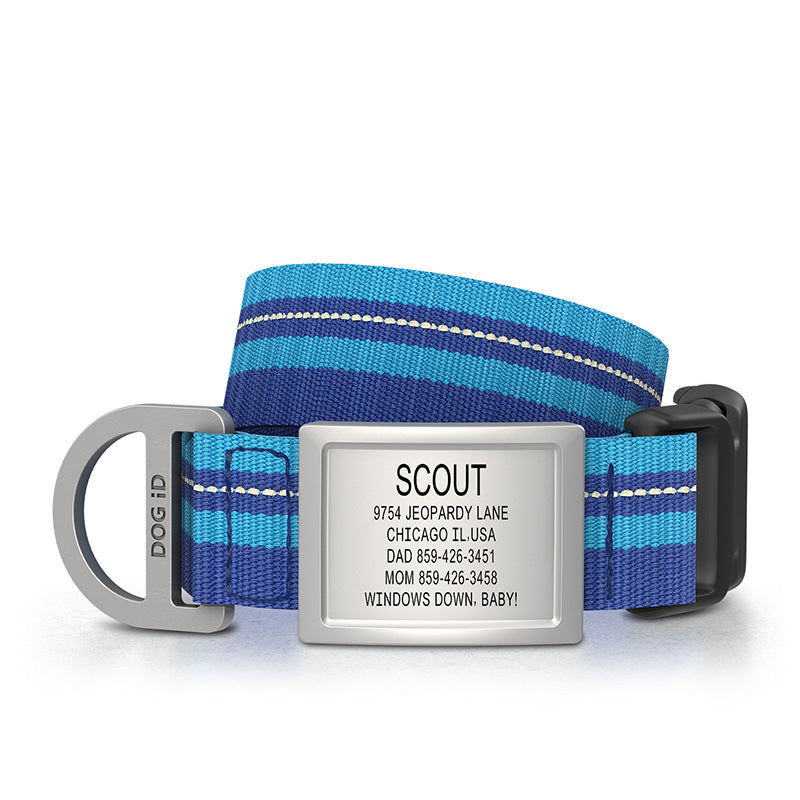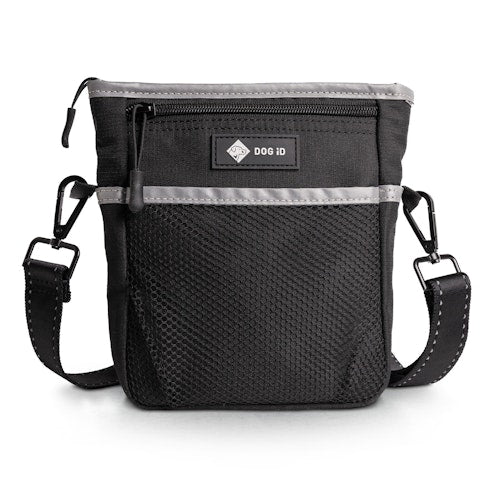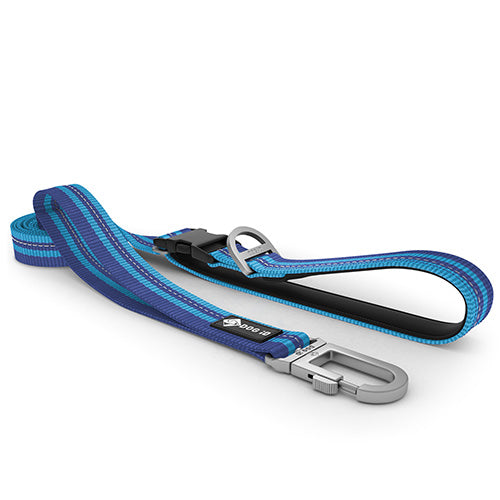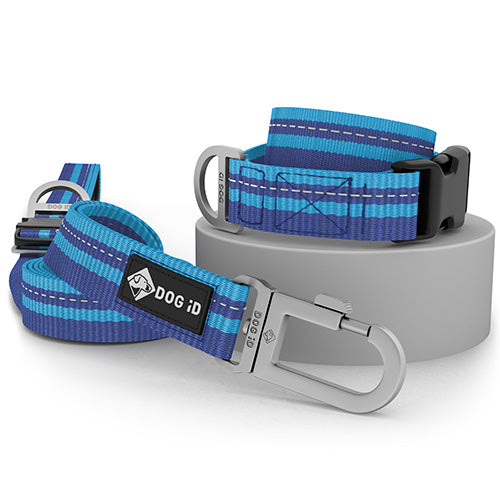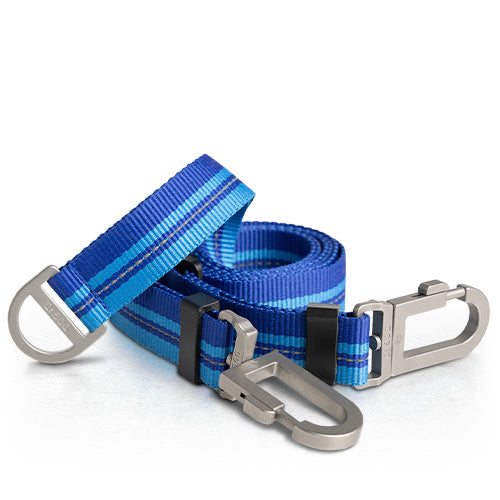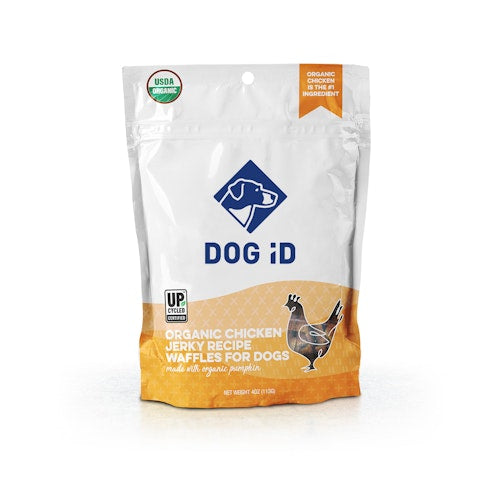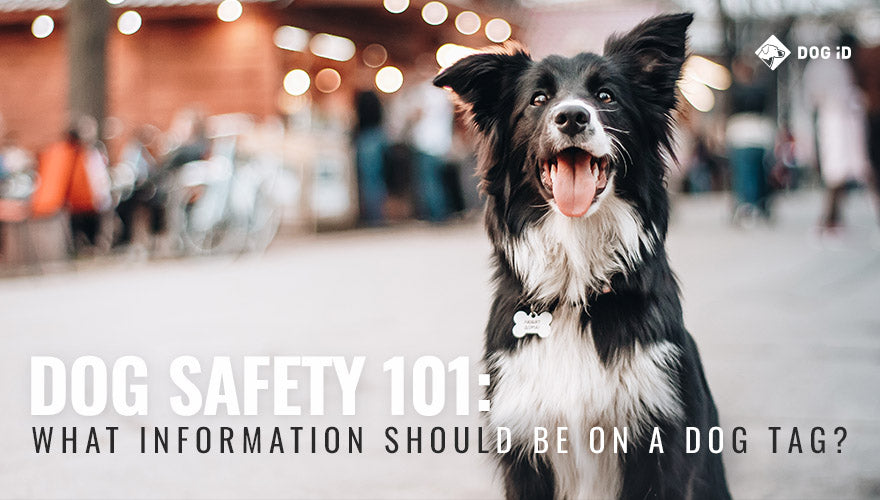There’s nothing like hiking with your furry best friend—no, not Mountain Man Dave, even if his beard is getting bushy. We’re talking about your canine companion. Hiking with dogs offers a unique blend of adventure and bonding.
Any dog is bound to love hiking, even if you’ve never taken them out. There are many trails to explore, smells to sniff, wild animals to see, and things to react to! It can also be overwhelming.
And there lies the key issue. It’s awesome to take your dog out hiking, but you’re going to want to do it with precaution. Hiking with dogs isn’t just a fun activity, but a responsibility for every dog owner. Beyond interacting with fellow hikers and respecting trail etiquette, there comes the issue of potentially having your dog run off into the woods.
We know losing your dog is the last thing you’d want to happen on a hike. So how do you prevent such a thing?
You can train your dog to stay by your side or keep them leashed for starters, but there are more effective safety measures at your disposal. From getting dog ID tags to practicing responsible trail hiking etiquette, and carrying a first aid kit with you, we’ll delve into these steps to ensure an enjoyable hiking experience for both you and your canine companion.
Respecting the Trail
Hiking with dogs in local parks is a rewarding experience. However, respecting trail rules is fundamental.
First things first: Your dog might not be welcome everywhere you want to go.
While many state, regional, and national parks do welcome dogs, some trails and specific parks have restrictions. The common causes of dog restrictions are usually related to wildlife. Park rangers are worried that dogs may disrupt the local community, whether by leaving their scent behind, chasing after wildlife, displaying aggressive behavior, or worse, their owners not picking up their dog’s poop.
Popular trails may also prohibit dogs to prevent trail congestion and potential hazardous interactions with children. Regulations aren’t the same for every park, so it’s in your best interest to choose dog-friendly trails before you head out.

Beyond that, when hiking with dogs, you’ll want to follow basic dog hiking etiquette, which is more formally called the National Park Service’s B.A.R.K. rule. B.A.R.K. stands for:
- Bag your pet’s waste.
- Always leash your pet.
- Respect wildlife.
- Know where you can go.
In general, these rules are about respecting nature, other animals, fellow hikers, and the trails themselves.
Always bag your pet’s waste. For one, leaving non-native waste in a protected natural trail is detrimental to the environment. Additionally, no one wants to accidentally step on or have their dogs interact with another dog’s waste.
Leashing your pet is another important rule to follow. If you have a well-trained dog, you might feel comfortable enough to let them go off leash for periods of time, just to give them some independence, but they should always be leashed when other hikers are around.

The safest option is to simply let their leash out while you’re alone, giving them the freedom to wander off ahead while bringing them back in when another hiker begins to approach.
Respecting wildlife is another big rule that needs to be followed, whether it’s picking up your dog’s waste or not allowing them to destroy the local trail. This means no eating local plants, no digging on the main trail, and not letting them run after any animals that appear in the woods.
Finer Etiquette
Before taking your dog on the trail, there are several factors to consider beyond just their readiness for the adventure.
First off, do not bring puppies on hikes. For short walks, bringing a pup along might be alright, but nothing too lengthy or adventurous. Puppies are yet to be trained, their immune systems aren’t strong enough for eating random plants and drinking out of errant puddles, and they’re going to tucker out quickly, becoming a nuisance to both you and other hikers on the trail.
Additionally, get some obedience training classes prior to hitting the trail if your dog struggles with being in their best behavior. There’s nothing as frustrating on a trail as the hiker, runner, or biker who barrels through everyone around them without at least calling out, or the hiking group that refuses to consolidate into a single line to make the trail comfortable for others.

Don’t let your dog get away with exhibiting similar behaviors, whether hogging the trail, barking at strangers, or sticking their nose where it shouldn’t be. If you notice these behaviors while on your daily walks, it’s best to nip them in the bud before heading off to the woods. Trust us. It will save you the headache of a stranger yelling at you for getting your dog too close to them.
Train Beforehand
As we previously mentioned, dogs must be trained prior to hiking. But we don’t just mean being able to follow simple commands or socializing with other people and dogs. Those are obviously vital to a safe hike, but you also need to consider your dog’s stamina before hiking.
They should be receiving enough physical exercise on a daily basis to guarantee that you don’t overwork them mentally or physically on a new hike. An out-of-shape or older dog could hurt their paws, hips, or legs, and you wouldn’t want that for your furry companion.
Check their paw pads regularly, as rough terrains can cause wear and tear. You might even consider packing dog booties to protect their paws, and make sure to bring along dog food for longer hikes, so that your pet remains nourished and energetic throughout.

Before going on a long hike, take some time out on the trails together on shorter hikes. This is a great way to introduce them to hiking without jumping straight into the deep end. Teach them to closely follow your commands, avoid wavering from the trail, and react calmly to other animals seen along the way.
Such lessons are important to keep your dog from getting too close to animal waste, garbage, unknown plants, and more, while out on a hike. Training them beforehand is an excellent way to guarantee they’re prepared to explore new trails with you.
Guarantee Hydration
Dogs don’t sweat like humans, so it’s harder for them to cool down while physically exerting themselves, especially in hot weather conditions. Provide your dog with regular drinks of water to avoid dehydration and heat stroke.
You’ll know when they really need water if they’re heavily panting or desperately trying to drink from random puddles. Don’t allow it to get to that point. Give them occasional sips of water to keep them hydrated.

Avoid random puddles, streams, or ponds for your dog’s hydration needs. These waters are also used, and defecated into, by many other animals (and humans passing through). They could be rife with pathogens, bacteria, and viruses that can make both you and your dog sick.
Strictly provide them with water you brought on the trail or any water that you purified while out hiking.
Gear Up Before Hitting the Trail
Before you hit the trail, make sure to bring everything your pup needs. This can include:
- A light dog jacket for mountaintops and heavier jackets for cold weather
- Dog boots for rough terrain and cold conditions
- A drinking bowl
- Snacks and food
- A blanket
- Poop bags
- A dog harness and a variable-length leash
- Any medication prescribed for your dog
Get a Dog ID
One of the most important things your dog should have on the trail is a dog collar ID. Similarly known as dog tags, a dog collar ID takes the traditional dog tag and upgrades it. How? Rather than putting a set of hanging tags on your dog’s collar, which can get caught on random objects, the ID is installed directly into the collar.
Why are they so important? Well, if you let your dog off leash, or if they manage to break free, they could very well get lost in the woods. It’s the last thing you want to think about, but it’s an unfortunate possibility. In the event that they go missing, you want to guarantee that strangers have a way of knowing that your pup has a home. Doing so could improve your chances of getting your dog back.
A dog collar ID sounds like a great idea, but what do I put on it?
What to put on a dog tag is up to personal preference, but there are five key things we suggest to include for your pup’s safety.
- Primary contact information: This should be your phone number (or your partner’s, if they’re more likely to answer their phone). List a first name alongside this, too, as it will help a stranger identify you, showing that this dog has an owner.
- Secondary contact information: The last thing you want is to miss one of the most important calls of your life. But just in case, list another contact who can be called in the event that you’re unavailable.
- Reward offer: Another unfortunate truth is that everyone loves dogs, and if someone randomly found a lost dog, they might just begin calling it their own, deciding to never look for the pup’s original owner. State that anyone who returns your dog will receive a cash prize. That incentive can be enough to get your dog returned to you.
- Personality quirks: Some dogs are big, lovable bears, but you might not know it from looking at them. List any strange quirks they have to help protect both themselves and anyone who befriends them. This can include things they are scared of, things they react aggressively to, or anything they particularly like and dislike.
- Your dog’s name: Lastly, list your dog’s name. While some people might argue that this makes it easier to steal a lost dog, it’s an easier way to humanize them as “someone’s pet”. It puts you, the owner, in that person’s mind and no good person would want another human to lose their beloved pet. Also, being called by their name will calm your dog, especially if they’re anxious around strangers.
Respecting the Trail with Your Pup
Hiking offers dogs a wonderful opportunity to explore and enjoy some independence. However, maintaining trail etiquette is crucial.
Apart from leashing your dog near strangers, equipping them with dog tags is essential. A dog collar ID enhances their safety, ensuring they can be identified if they encounter someone unfamiliar or get lost.
While immersed in nature, cherish the moments, but always prioritize your dog’s safety.
Image Credits:
Juliana Brykova / Shutterstock.com
Zivica Kerkez / Shutterstock.com
CSNafzger / Shutterstock.com
Ellis Berankova / Shutterstock.com
nullplus / Shutterstock.com
